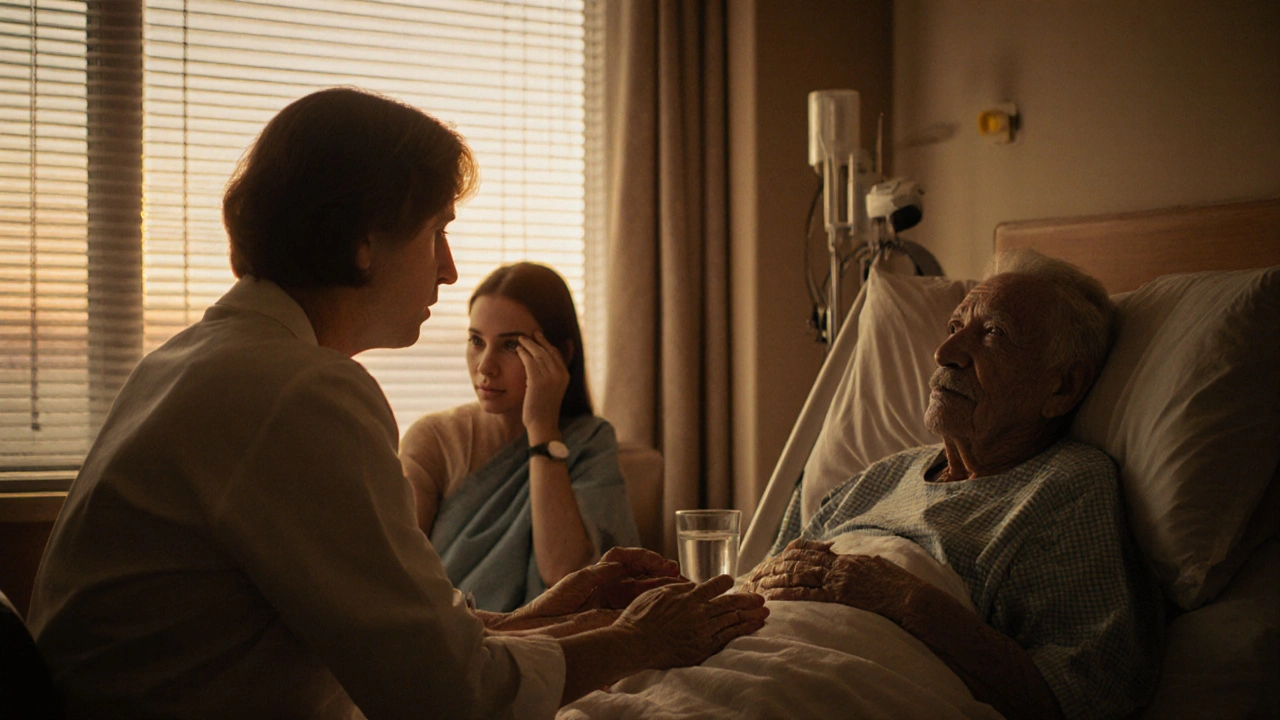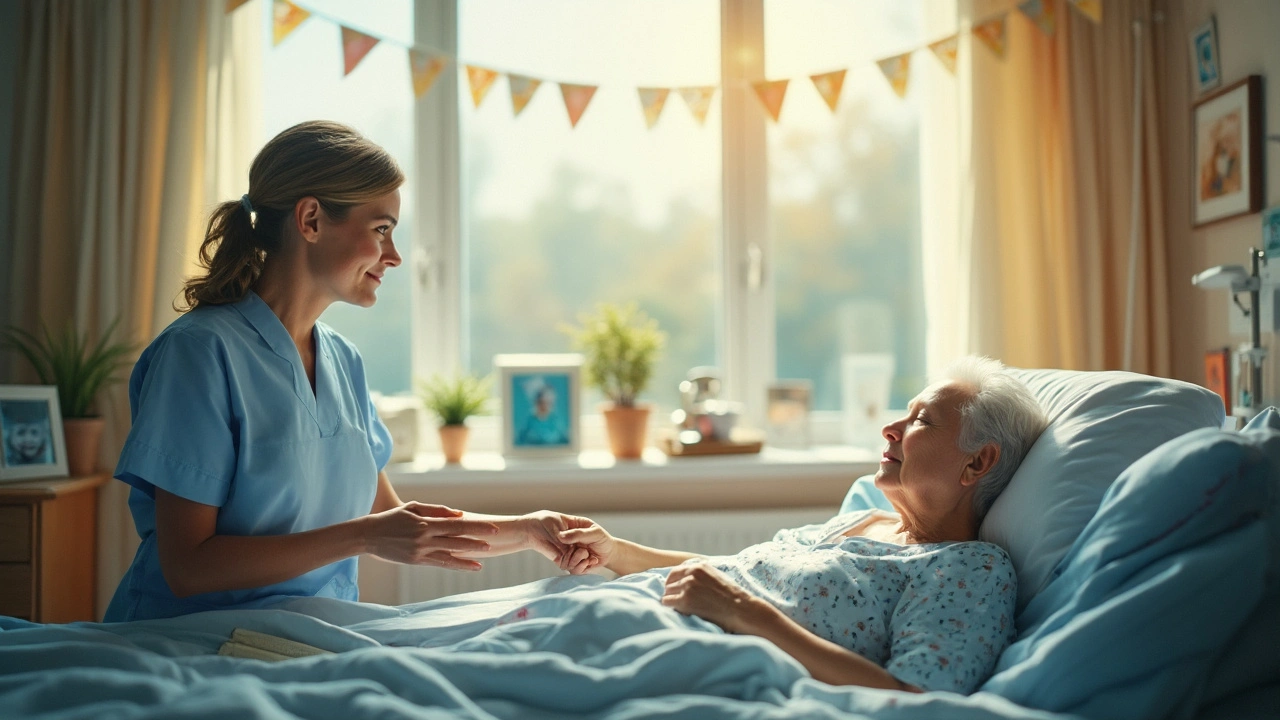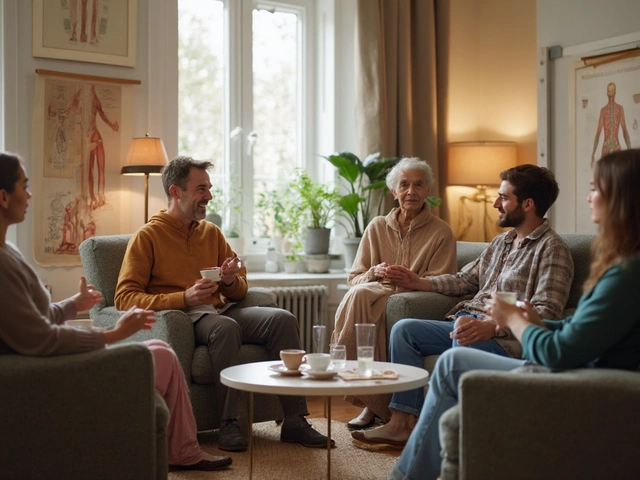End-of-Life Care: Comfort, Pain Relief & Gentle Therapies
When someone is nearing the end of life, the goal shifts from curing to comfort. Small, targeted things—gentle touch, a short acupressure sequence, or a trained hospice massage—can cut anxiety, ease pain, and bring clear relief fast. This page collects practical options you can use now, whether you’re a caregiver, family member, or a therapist working in palliative settings.
Care that focuses on comfort respects symptoms, mood, and safety. Pain control is still central: talk to the medical team about medicines, but know hands-on therapies work alongside drugs, not instead of them. Therapies like light massage, healing touch, Amma, or simple acupressure often reduce muscle tension, improve sleep, and lower stress without heavy side effects.
Practical Tips for Caregivers
Keep sessions short—5 to 20 minutes—so they stay pleasant, not tiring. Use slow, light strokes and ask yes/no questions: "Is this pressure okay? Thumbs up or down?" Watch skin closely; fragile skin needs minimal friction and plenty of lotion to avoid tears. Positioning matters: small pillows under knees or behind the back can stop strain and make touch more effective.
Simple acupressure points can help with nausea, breathlessness, or anxiety. Learn a few reliable points—like the inner wrist for nausea or gentle shoulder holds for breathlessness—and practice them until you feel confident. If the person can’t respond, base pressure and motion on visible comfort signs: relaxed breathing, softer face muscles, or calmer hands.
Finding the Right Therapy and Therapist
Look for therapists with hospice or palliative training. Many hospice programs have volunteers or licensed massage therapists who know how to work with frail patients. If you hire privately, ask about experience with end-of-life clients, infection control, and signs to stop a session. Therapies that focus on gentle movement—Feldenkrais, Ortho-Bionomy, or guided touch—are often safer than deep tissue work in this setting.
Be cautious around risks: avoid deep pressure over swollen limbs, active infections, recent fractures, or known blood clots. If the person is on blood thinners, tell the therapist. For people with severe fatigue, brief scalp or hand massage may give more benefit than a full-body session.
Finally, don’t forget the emotional side. Quiet presence, steady hands, and respectful touch can calm fear and give family members a way to help directly. Ask the care team for referrals, keep notes on what helps, and trust small comforts—they add up to better days and calmer nights during a hard time.

How Reiki Supports Comfort and Calm in Palliative Care
Reiki supports comfort and calm in palliative care by reducing anxiety, improving sleep, and offering peaceful presence without interfering with medical treatment. It’s used in hospitals and homes across Australia to help patients and families find stillness in difficult times.

Palliative Massage: A Healing Touch for the Soul
This article unpacks what really goes on with palliative massage and why it's more than just a nice rubdown. Find out how this focused touch can make late-stage illness a little softer, both physically and emotionally. There are real stories of relief, honest facts about what works, and practical tips if you're considering this kind of care for yourself or someone you care about. Whether at home or in hospice, palliative massage isn’t just about managing pain—it’s about feeling human again. Get some straightforward advice on how to approach it and what to expect.
Categories
- Health and Wellness (148)
- Alternative Therapies (86)
- Massage Therapy (40)
- Travel and Culture (15)
- Beauty and Skincare (9)
- Holistic Health (8)
- Health and Fitness (5)
- Spirituality (5)
- Other (2)
- Personal Development (2)
Popular Articles

Amma Massage: The Answer to Your Back Pain
Jun, 15 2025


